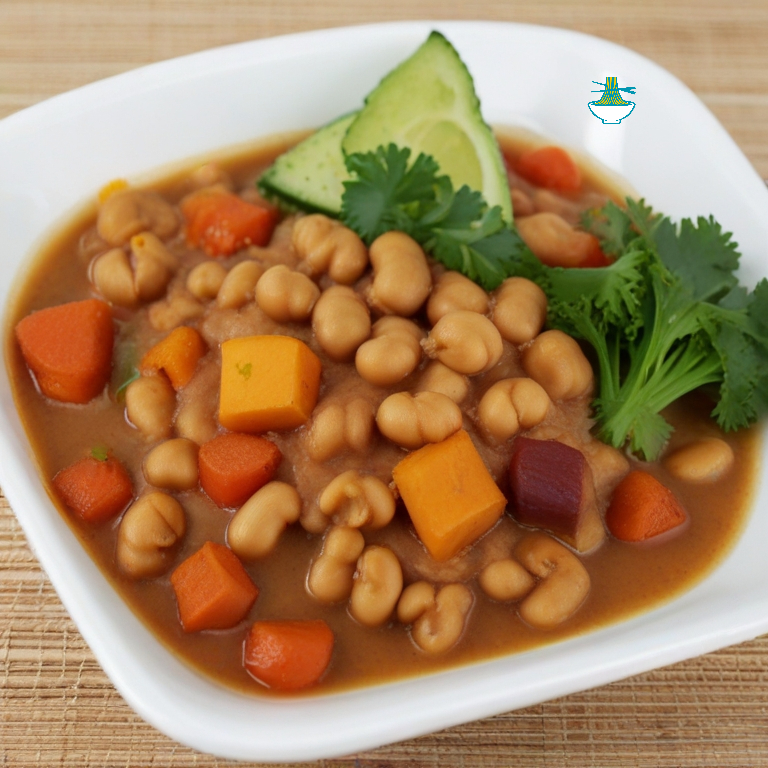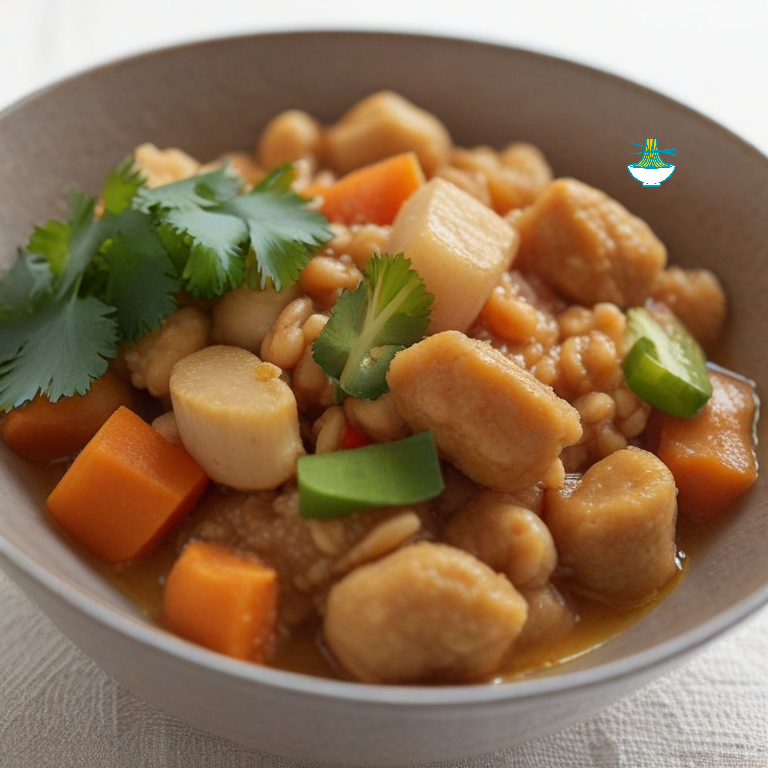Ifisashi is a traditional Zambian dish that features roasted peanuts combined with onions, tomatoes, leafy greens, and vegetable broth. The dish is known for its rich and savory flavor profile, making it a popular choice among Zambian cuisine enthusiasts. It is often served alongside nshima, a maize meal porridge that complements the flavors of Ifisashi.
The history of Ifisashi traces back to Zambia's culinary heritage, where peanuts are a staple ingredient in many dishes due to their abundance and nutritional value. Over time, Ifisashi has become a symbol of Zambian culinary identity, showcasing the country's diverse and flavorful traditional foods.
Ingredients:
- 2 cups raw peanuts
- 1 onion, finely chopped
- 2 tomatoes, chopped
- 2 cups chopped leafy greens (such as spinach or kale)
- 2 cups vegetable broth
- Salt and pepper to taste
- Cooking oil

Method of Preparation:
1. Prepare Peanuts: Roast the raw peanuts in a pan until they are golden brown. Remove from heat and allow them to cool. Once cooled, grind the peanuts into a coarse powder using a food processor or mortar and pestle.
2. Cook Vegetables: In a separate pan, heat some cooking oil and sauté the chopped onions until translucent. Add the chopped tomatoes and cook until they soften.
3. Add Peanuts: Stir in the ground peanuts into the onion and tomato mixture. Cook for a few minutes to combine the flavors.
4. Add Greens: Add the chopped leafy greens and vegetable broth to the pan. Stir well and let it simmer for about 10-15 minutes until the greens are cooked and the mixture thickens slightly.
5. Seasoning: Season with salt and pepper according to your taste preferences.
6. Serve: Ifisashi is traditionally served with nshima, a Zambian staple food made from maize meal. Serve the Ifisashi hot alongside a portion of nshima.
Nutrition Value:
1. 2 cups raw peanuts:
- Calories: 1612 kcal
- Carbohydrates: 34.8 g
- Protein: 71.6 g
- Fat: 136 g
- Sodium: 8 mg
- Cholesterol: 0 mg
- Vitamins: Vitamin E, niacin, folate, thiamine, riboflavin
- Minerals: Magnesium, phosphorus, potassium, zinc, copper
- Nutritional Benefits: Rich in healthy fats, protein, vitamins, and minerals. Provides energy, supports muscle growth, and contributes to overall nutrient intake.
2. 1 onion, finely chopped:
- Calories: 44 kcal
- Carbohydrates: 10.4 g
- Protein: 1.2 g
- Fat: 0.1 g
- Sodium: 4 mg
- Cholesterol: 0 mg
- Vitamins: Vitamin C, vitamin B6
- Minerals: Potassium, phosphorus, magnesium
- Nutritional Benefits: Low in calories, a good source of vitamin C and other essential nutrients. Adds flavor and aroma to dishes
3. 2 tomatoes, chopped:
- Calories: 34 kcal
- Carbohydrates: 7.7 g
- Protein: 1.6 g
- Fat: 0.4 g
- Sodium: 6 mg
- Cholesterol: 0 mg
- Vitamins: Vitamin A, vitamin C, vitamin K, vitamin E
- Minerals: Potassium, manganese, copper
- Nutritional Benefits: Low in calories, high in vitamins and antioxidants. Supports immune function and skin health.
4. 2 cups chopped leafy greens (such as spinach or kale):
- Calories: 14 kcal (spinach), 66 kcal (kale)
- Carbohydrates: 2.2 g (spinach), 14.2 g (kale)
- Protein: 1.6 g (spinach), 6.7 g (kale)
- Fat: 0.2 g (spinach), 0.6 g (kale)
- Sodium: 23 mg (spinach), 26 mg (kale)
- Cholesterol: 0 mg
- Vitamins: Vitamin A, vitamin C, vitamin K, folate
- Minerals: Calcium, iron, magnesium, potassium
- Nutritional Benefits: Low in calories, high in vitamins, minerals, and antioxidants. Supports bone health, heart health, and overall well-being.
5. 2 cups vegetable broth:
- Calories: 60 kcal (approximate, varies based on ingredients)
- Carbohydrates: 10 g (approximate, varies based on ingredients)
- Protein: 4 g (approximate, varies based on ingredients)
- Fat: 0.5 g (approximate, varies based on ingredients)
- Sodium: 900 mg (varies based on ingredients and recipe)
- Cholesterol: 0 mg
- Vitamins: Varies based on ingredients
- Minerals: Varies based on ingredients
- Nutritional Benefits: Provides hydration, adds flavor to dishes. Can be a source of vitamins and minerals depending on the ingredients used.
6. Salt and pepper to taste:
- Calories: Negligible
- Carbohydrates: Negligible
- Protein: Negligible
- Fat: Negligible
- Sodium: Varies based on amount used
- Cholesterol: 0 mg
- Nutritional Benefits: Adds flavor but should be used in moderation due to sodium content.
7. Cooking oil:
- Calories: Varies based on type (e.g., olive oil, vegetable oil)
- Carbohydrates: Negligible
- Protein: Negligible
- Fat: Varies based on type (e.g., 14 g in 1 tablespoon of olive oil)
- Sodium: Negligible
- Cholesterol: Negligible
- Nutritional Benefits: Provides healthy fats, adds flavor and texture to dishes. Choose oils high in unsaturated fats for heart health.


Comments